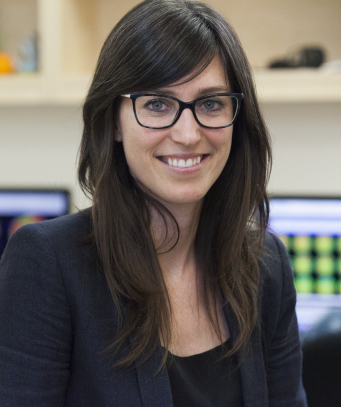By Alexa Pichet Binette / 2022-03-24
Exceptionally this year, QBIN will be awarding two Professors the Rising Star in Bio-Imaging in Quebec award, Profs. Sylvia Villeneuve and Hassan Rivaz, who will present their work at the 2022 QBIN Scientific Day in Sherbrooke on June 2nd along with this year’s William Feindel lecturer, Louis Collins. In order to learn more about their research and interests, the QBIN blog team conducted interviews with each of them. Stay tuned for interviews with Hassan Rivaz and Louis Collins soon and enjoy the interview with Sylvia Villeneuve below!

Sylvia Villeneuve is Associate Professor in the Department of Psychiatry at McGill University and holds a Canada Research Chair in Early Detection of Alzheimer’s Disease. She directs the Multimodal Imaging of the Aging Brain lab at the Douglas Institute, where she is also co-director of the StoP-AD Center. Her research agenda focuses on aging and Alzheimer’s disease, primarily the preclinical form of the disease, with the aim of better understanding biological and brain changes before the onset of cognitive decline. Like the previous Rising Stars, Prof. Villeneuve combines scientific rigor, a positive attitude and innovative ideas! I had the chance to discuss her background and vision of research with her, which will no doubt inspire many. (Note: the interview has been translated from French and edited for length and clarity)
Who is Sylvia Villeneuve?
I completed my bachelor’s degree at UQAM in psychology where I did an honors thesis on child development. I then obtained my doctorate in neuropsychology in research and intervention under the supervision of Sylvie Belleville at Université de Montréal. In my thesis I developed memory tasks to differentiate between patients with vascular-type mild cognitive impairment vs. Alzheimer’s type. In fact my interest in Alzheimer’s disease started very early, I participated in a science fair in elementary school with a project on Alzheimer’s disease! After my doctorate, I then did a post-doctorate at Berkeley with William Jagust in connection with amyloid imaging in Alzheimer’s disease. Amyloid is one of the two pathologies of Alzheimer’s disease – the other being the aggregates of tau proteins that can be measured in the brain using positron emission tomography (PET). I did another short postdoc at NorthWestern University before being hired at McGill.
When did you know you wanted to pursue a career in research rather than clinical neuropsychology?
I would say that it became clearer towards the end of my doctorate, during the clinical internship. I realized that at this time, when we were exclusively in the clinic, I missed research. It was during my first postdoc that I realized that I wanted to become a professor and really pursue a career in research. That being said, I consider myself a better researcher because of my clinical training! This training still serves me well and my current research is closely linked to clinical applications. What excites me about my research agenda is the aim of having a clinical impact on Alzheimer’s disease.
Speaking of which, what excites you the most about your current research?
We are in an era where we constantly have new biomarkers to better understand Alzheimer’s disease! For example, during my postdoc, amyloid PET scans were already established. Then, soon after I started at McGill, PET scans for tau (the second pathology of Alzheimer’s disease) were developed and we were among…
